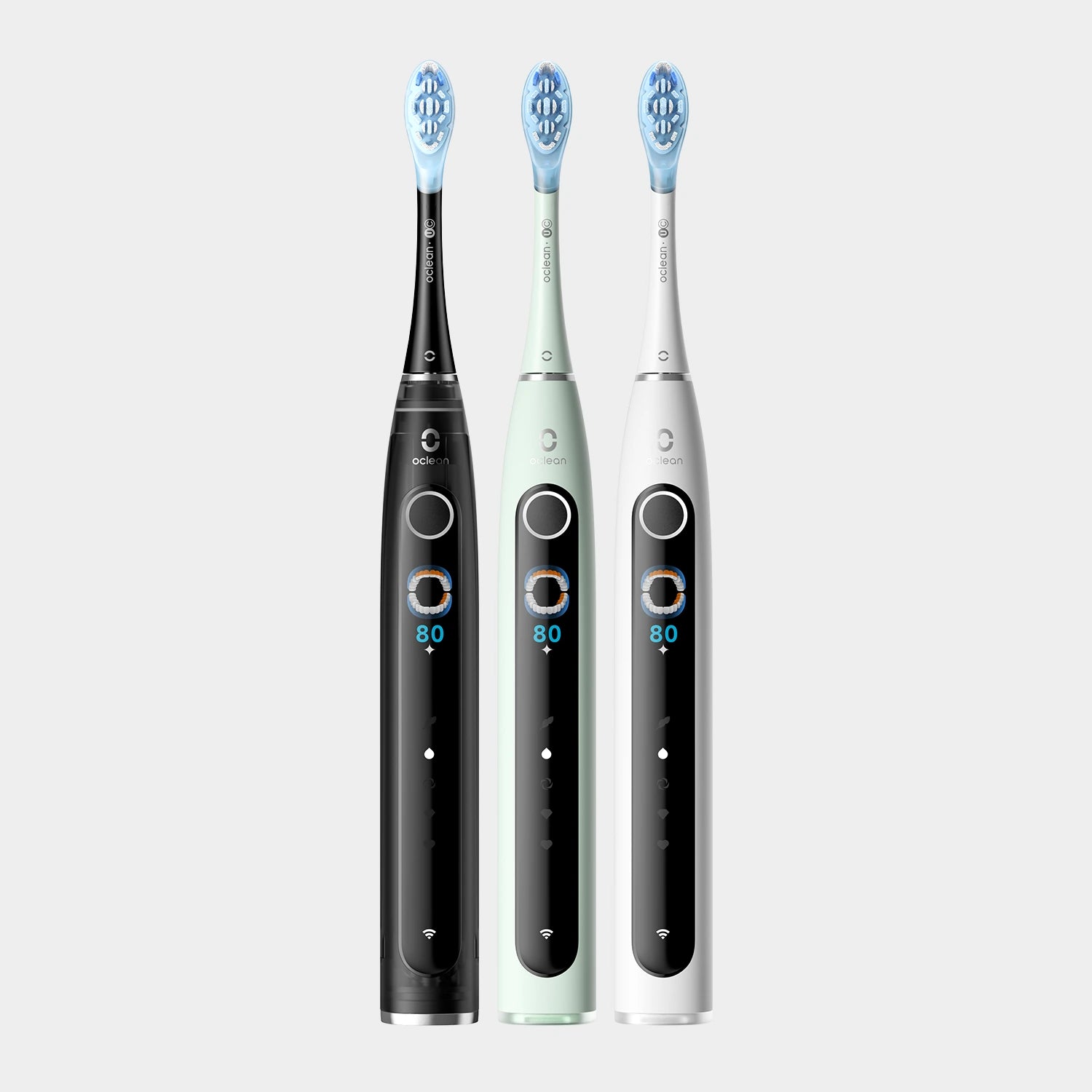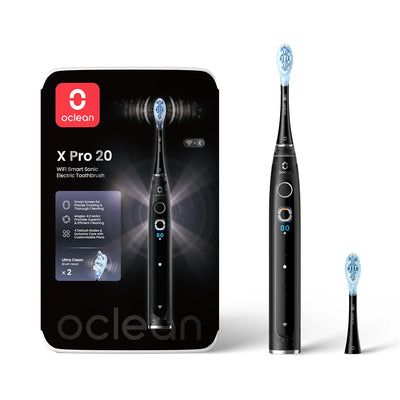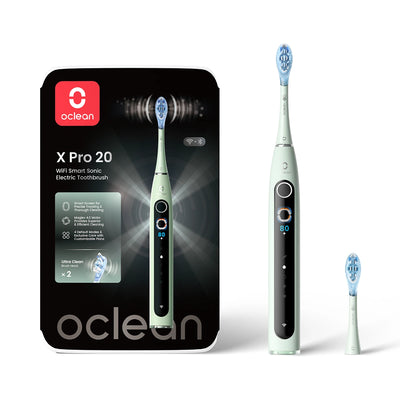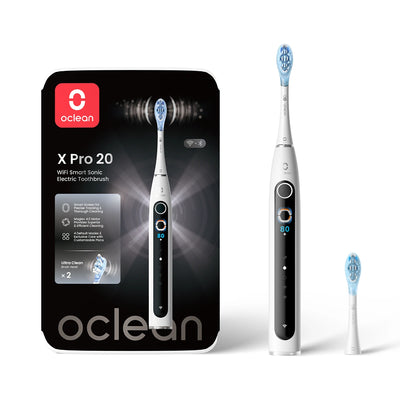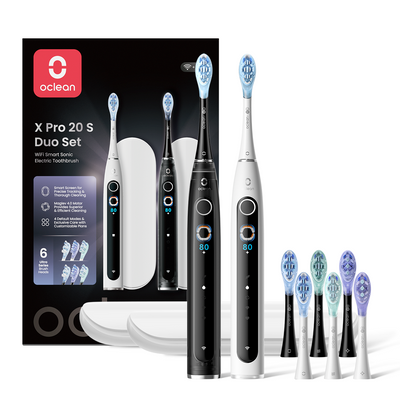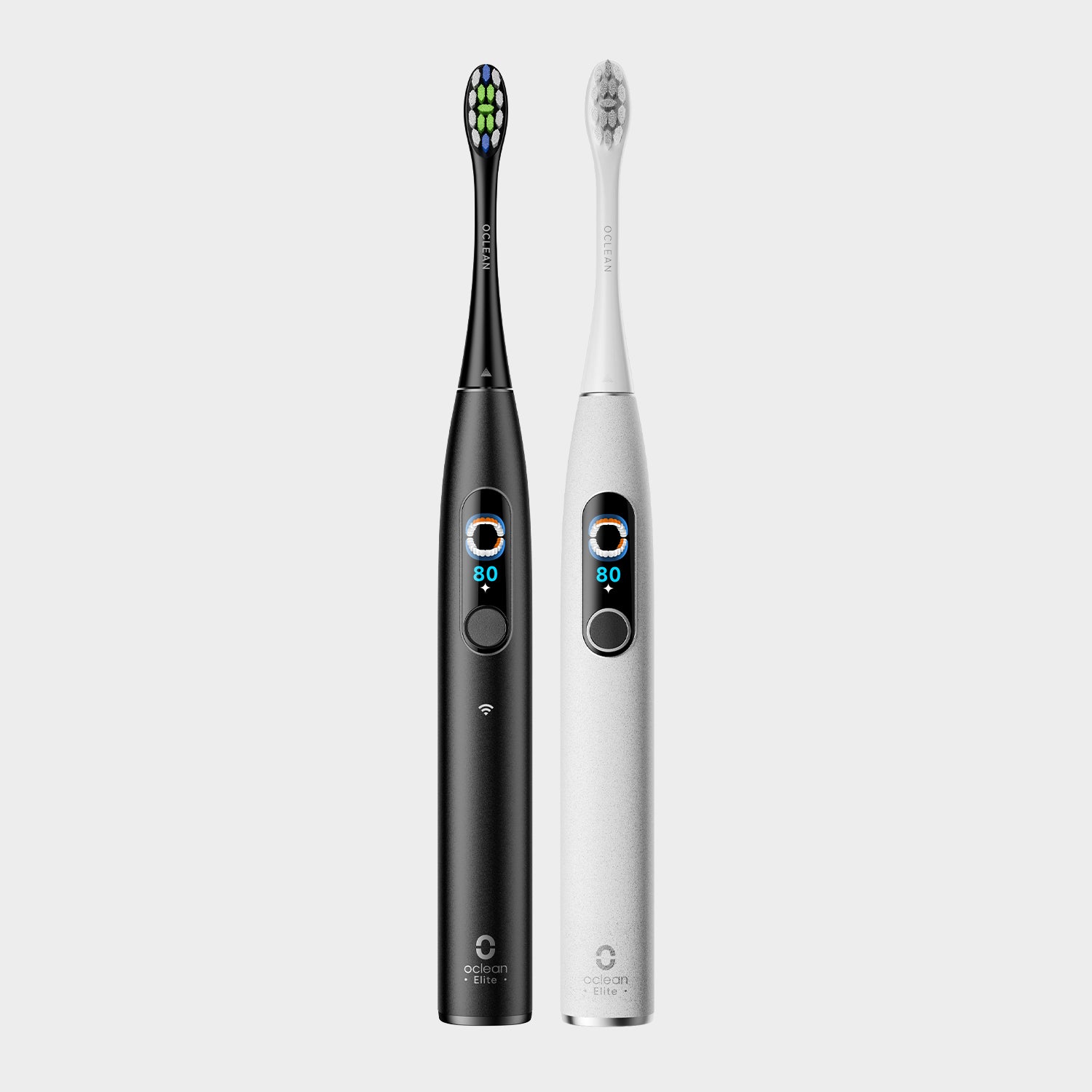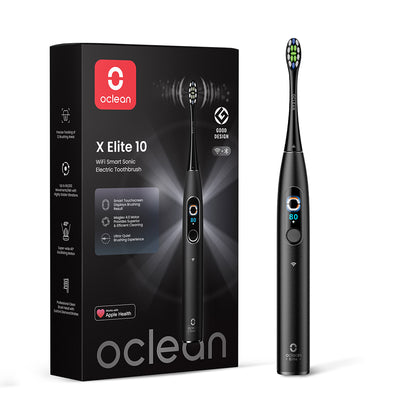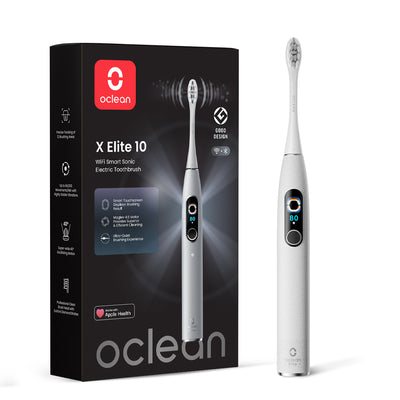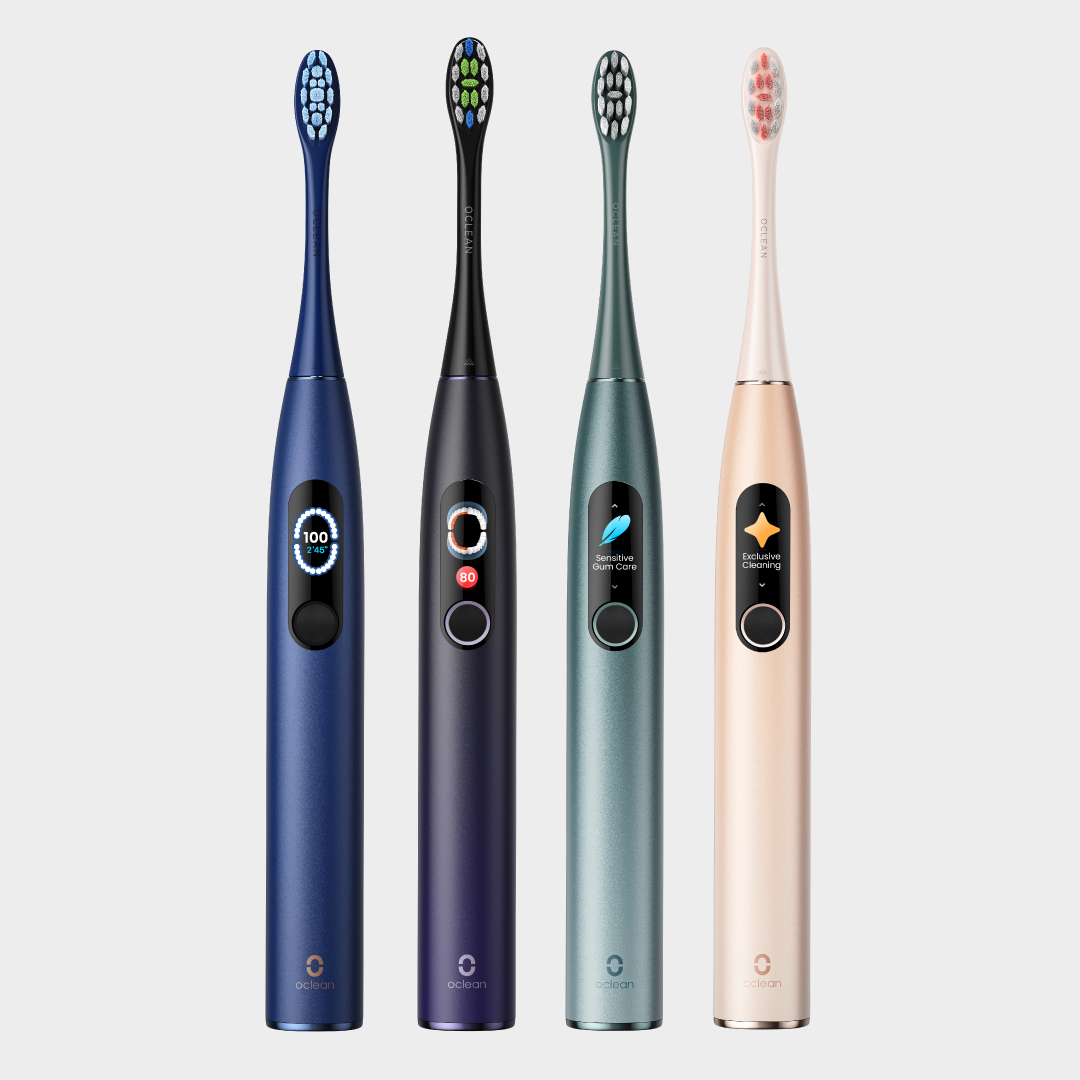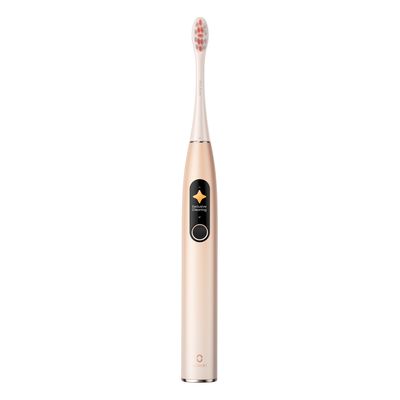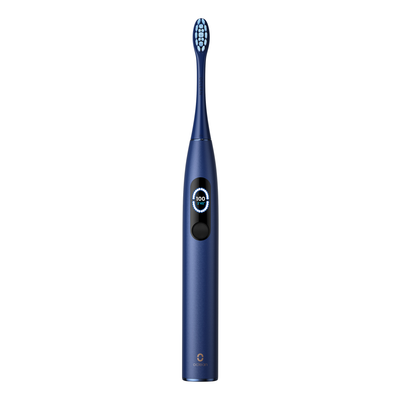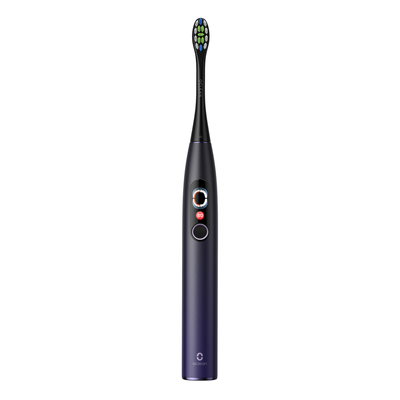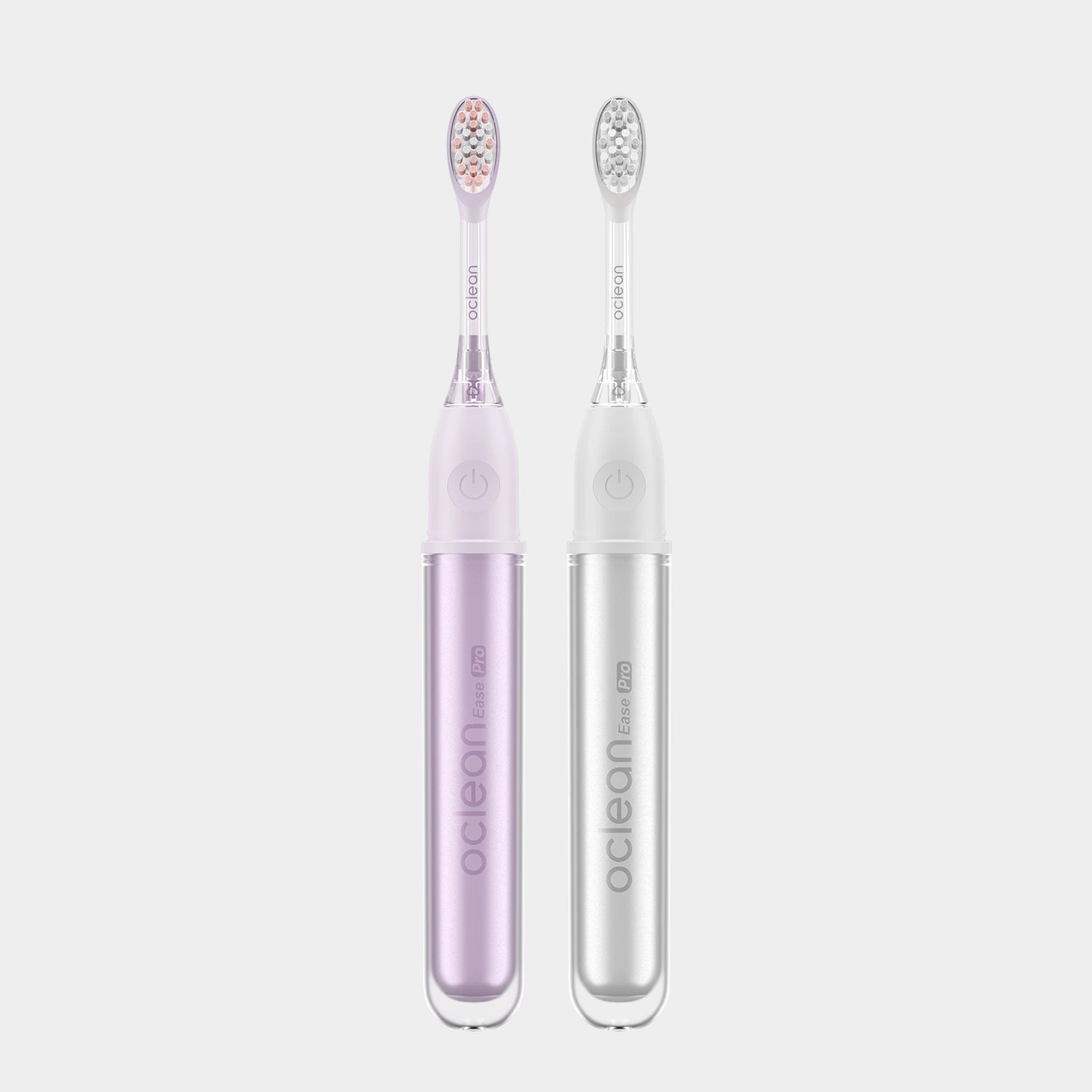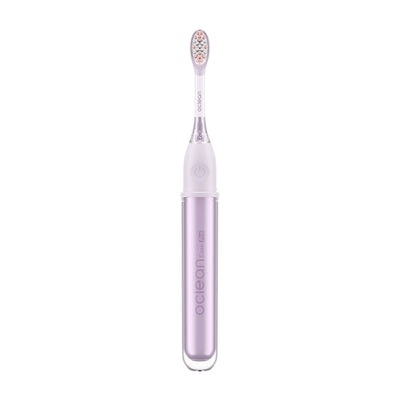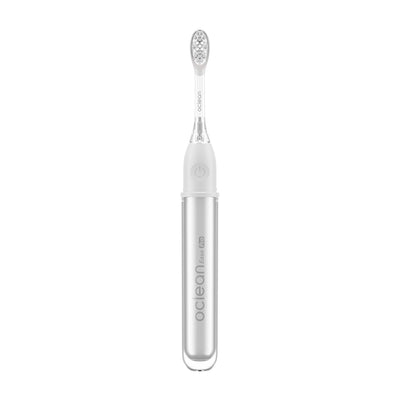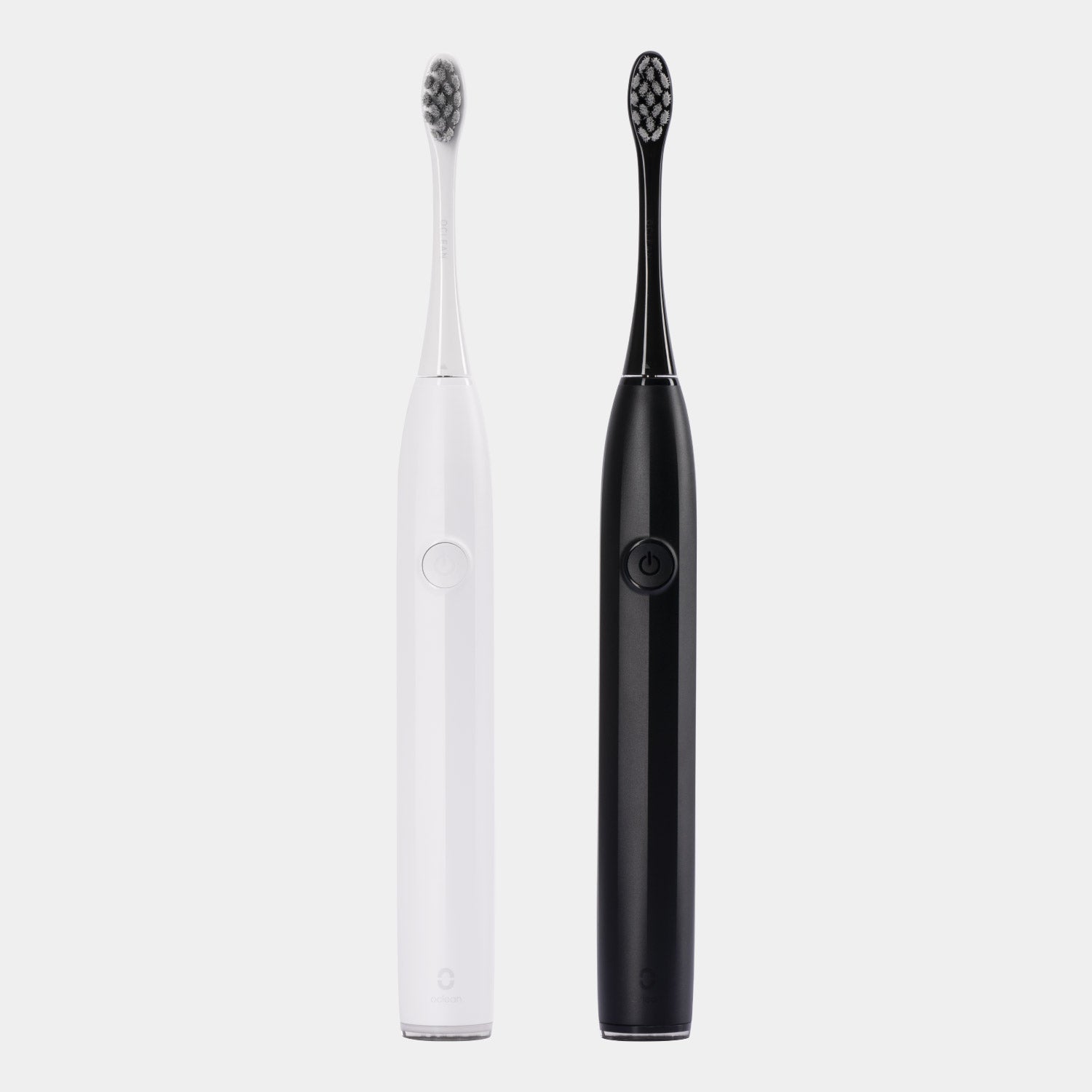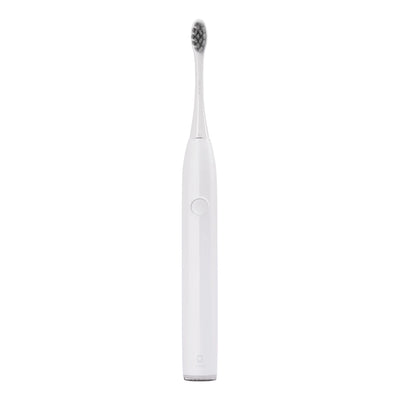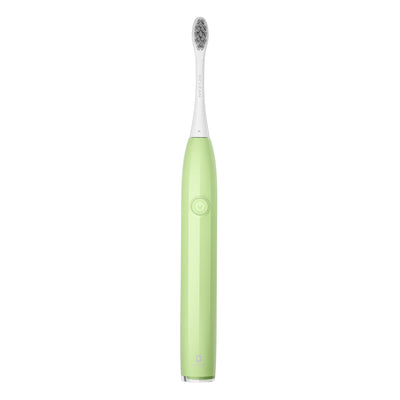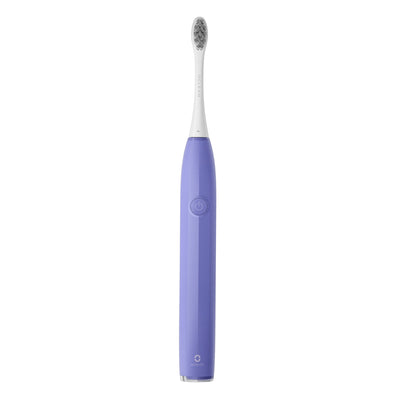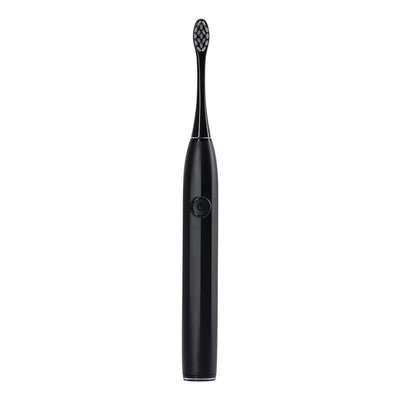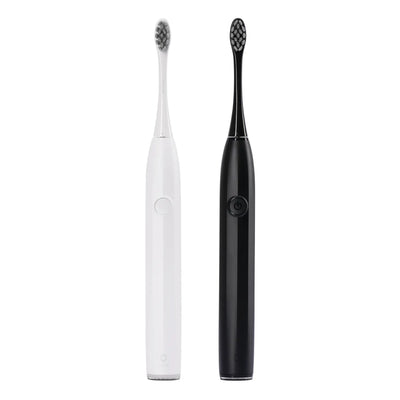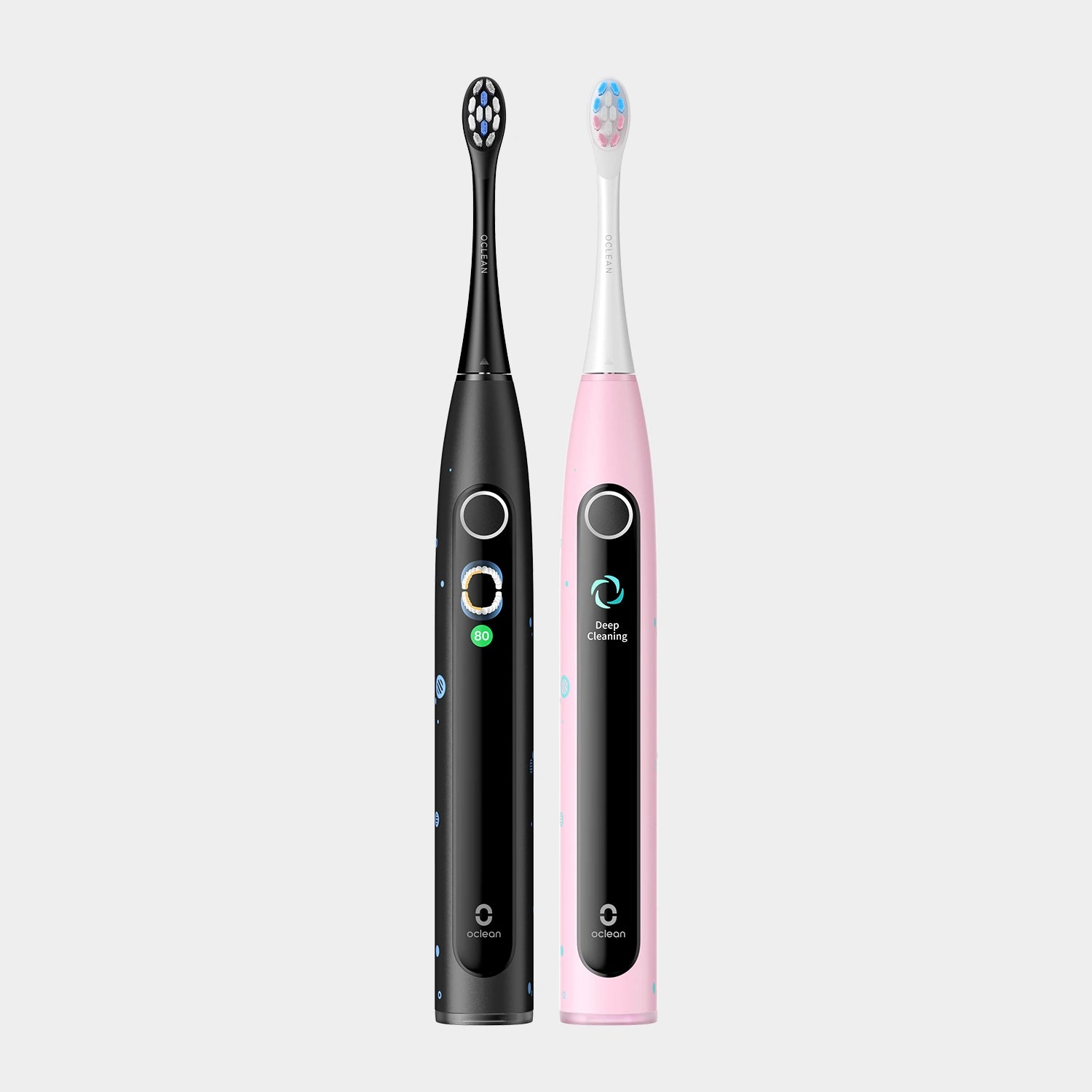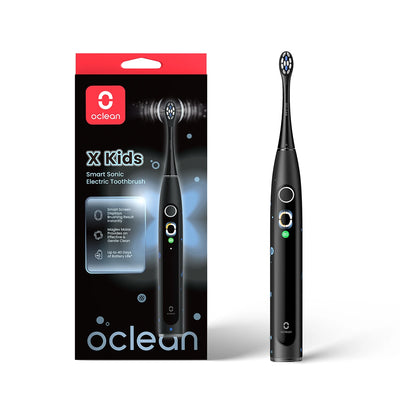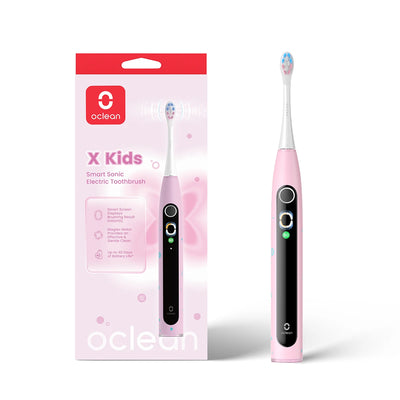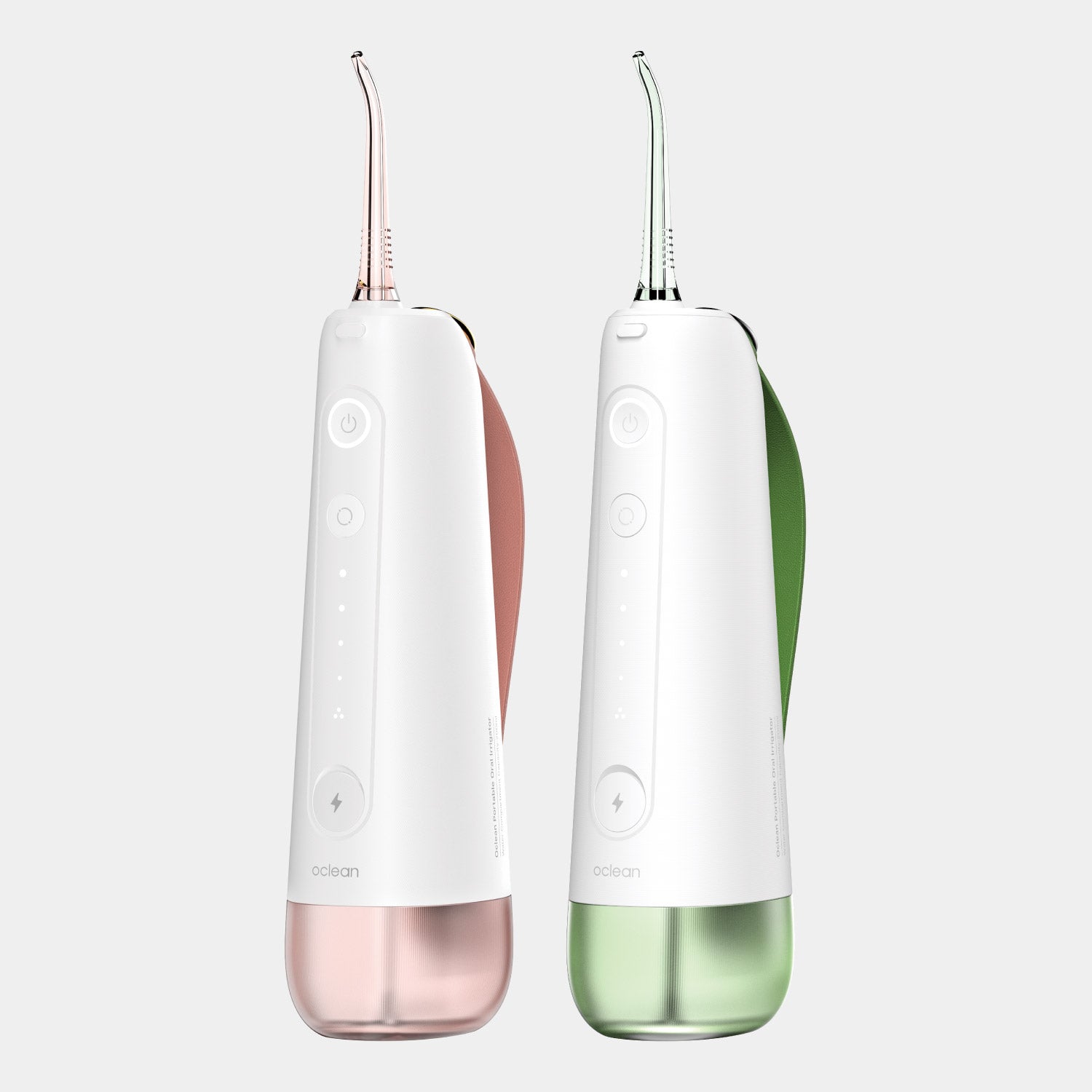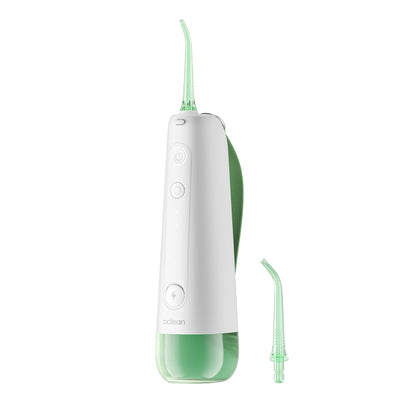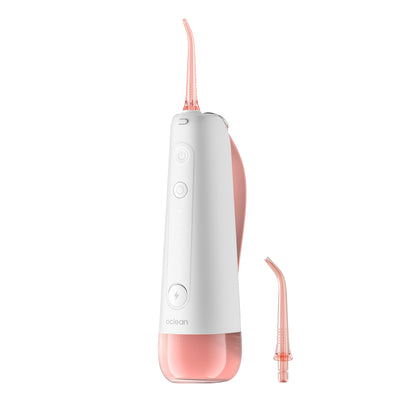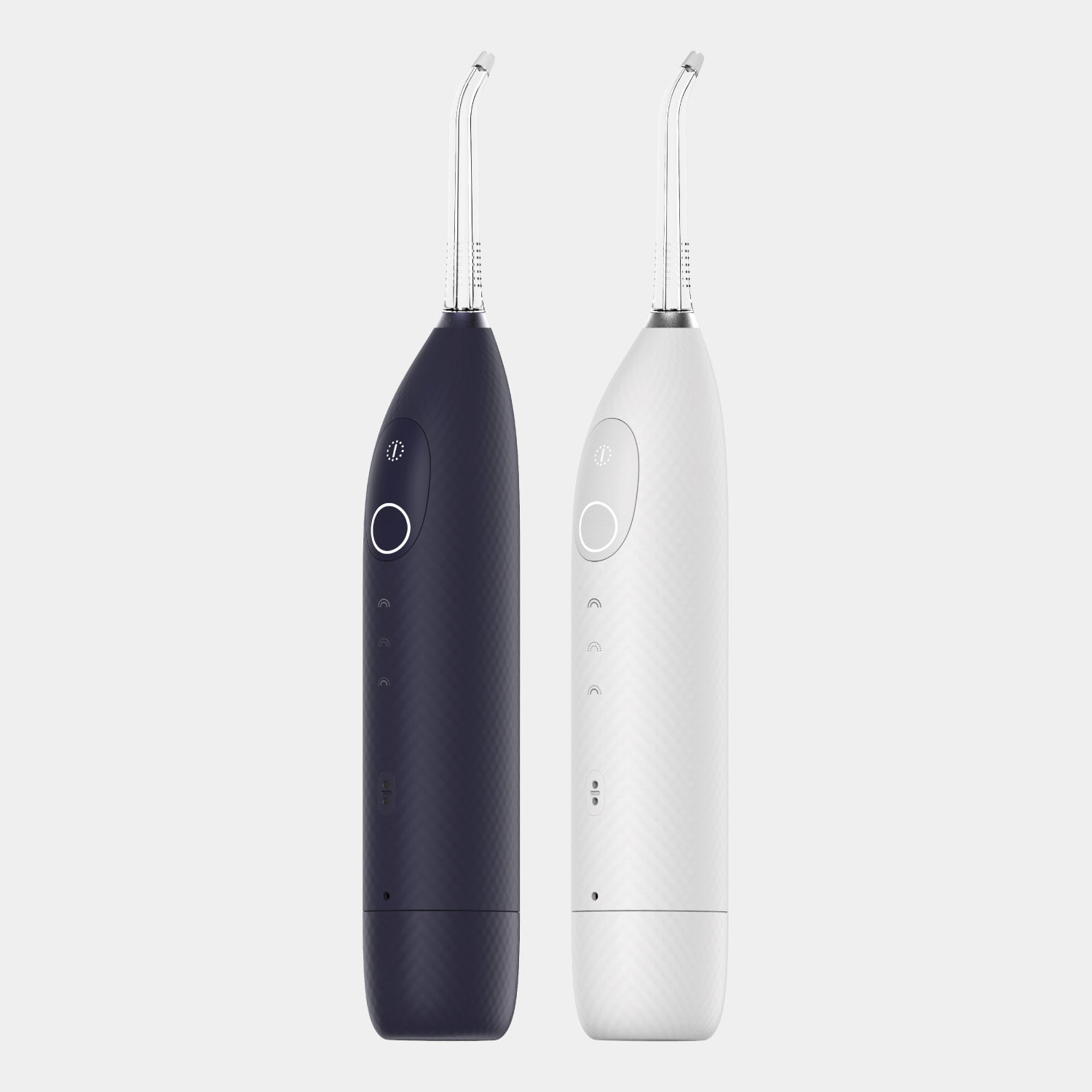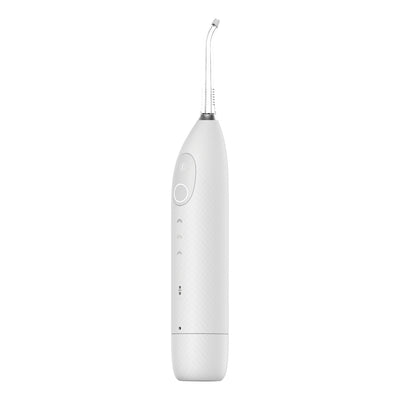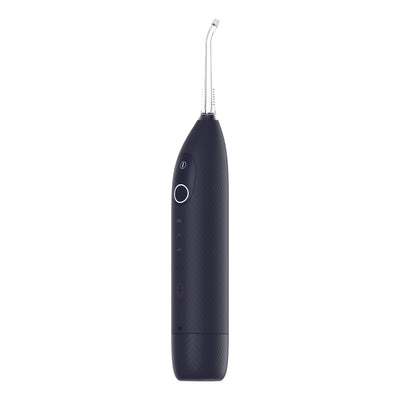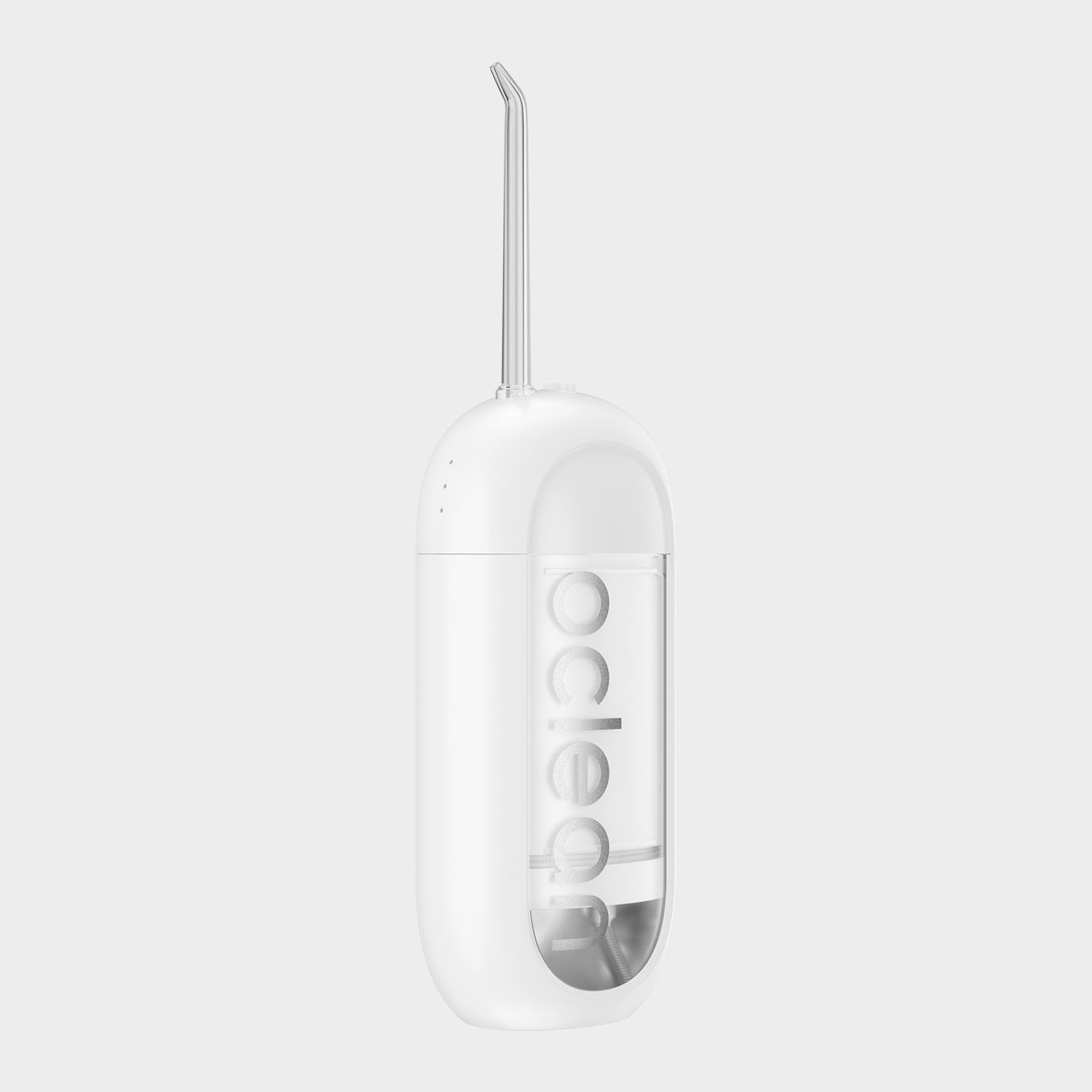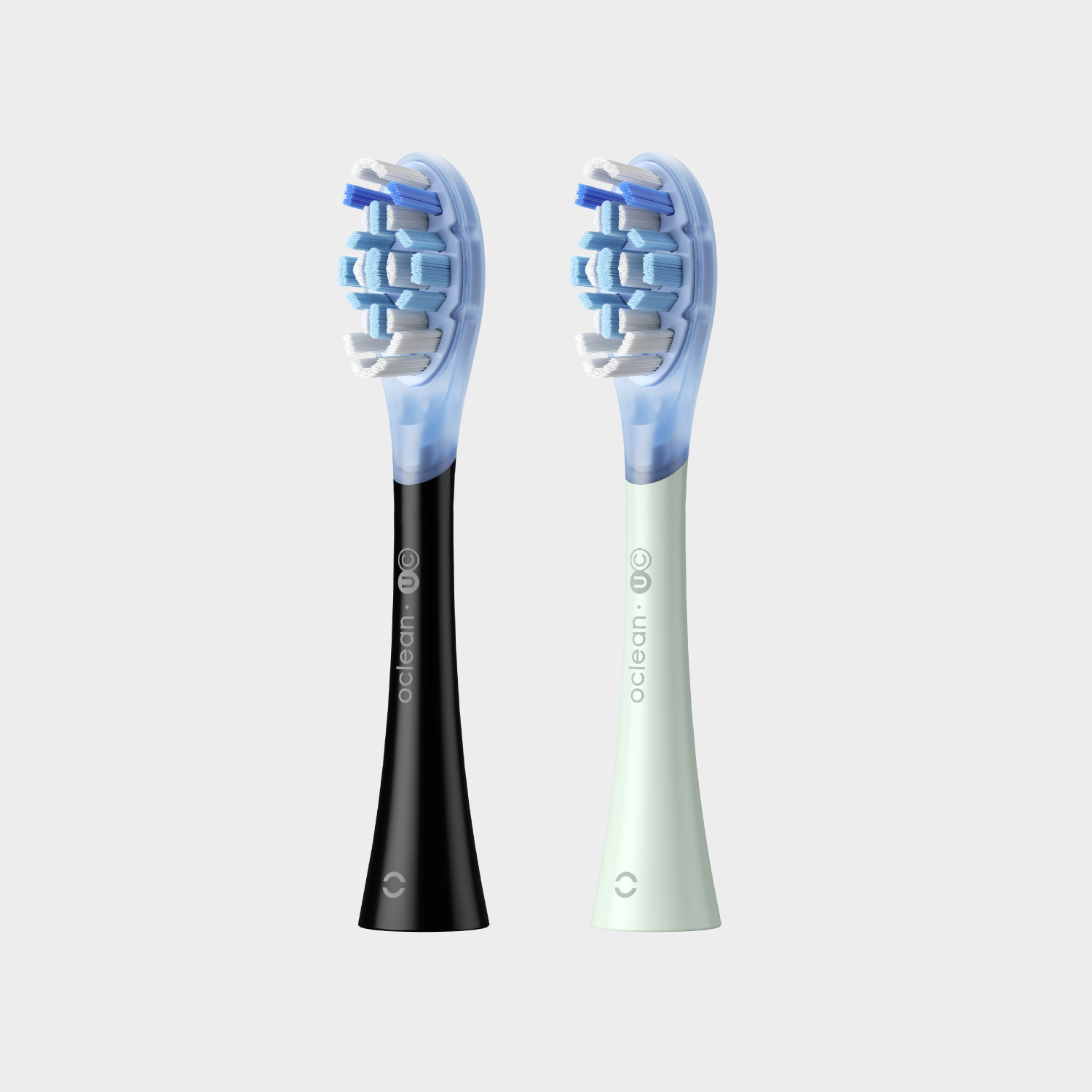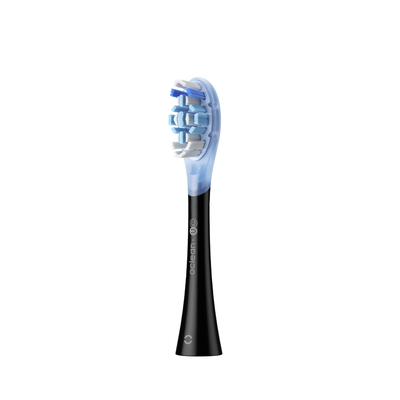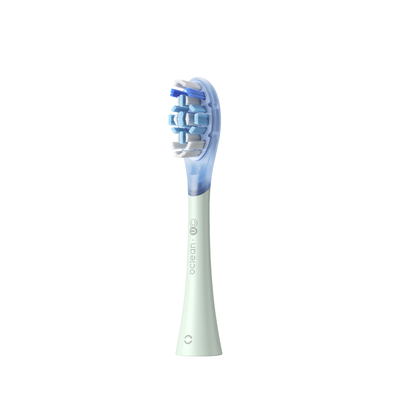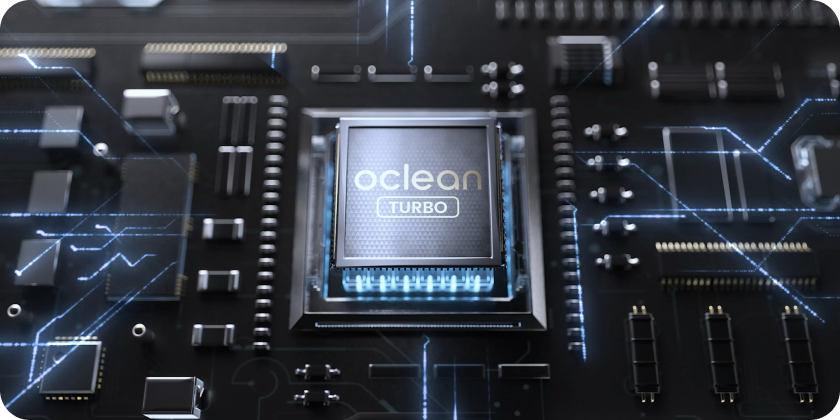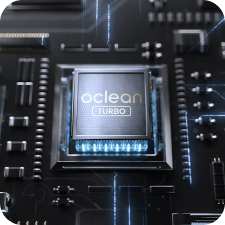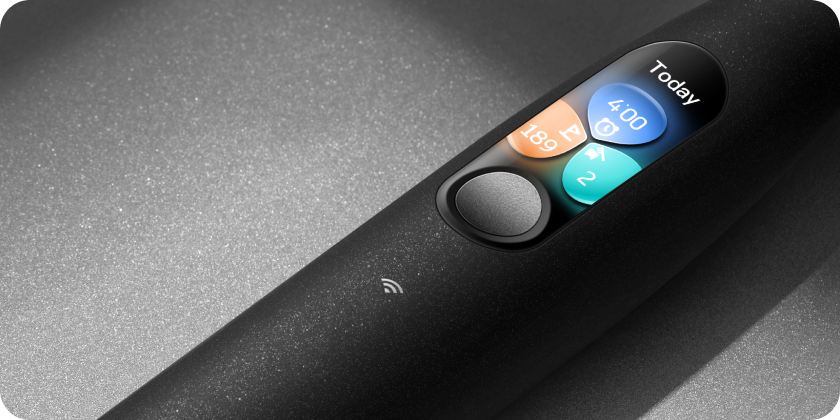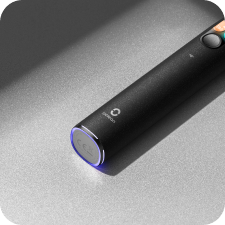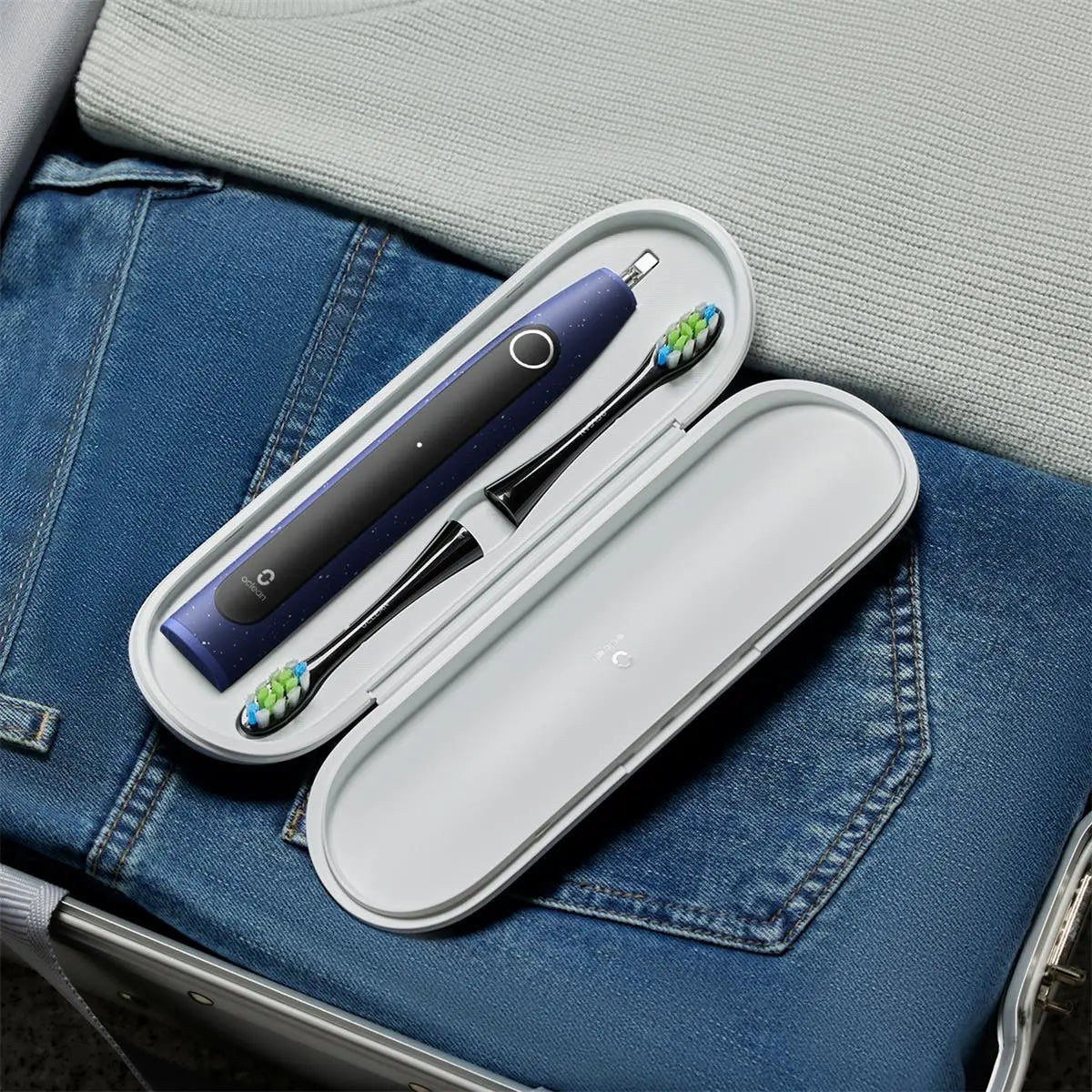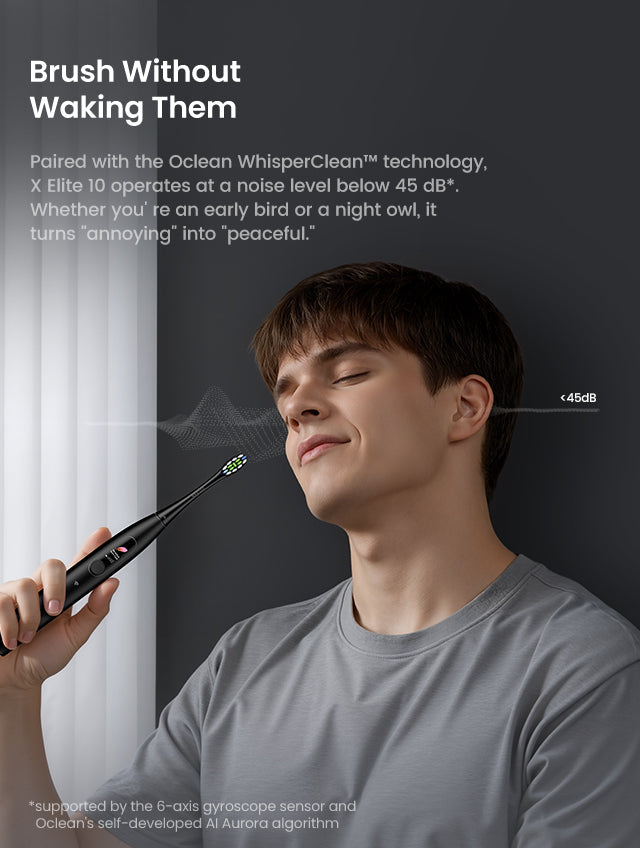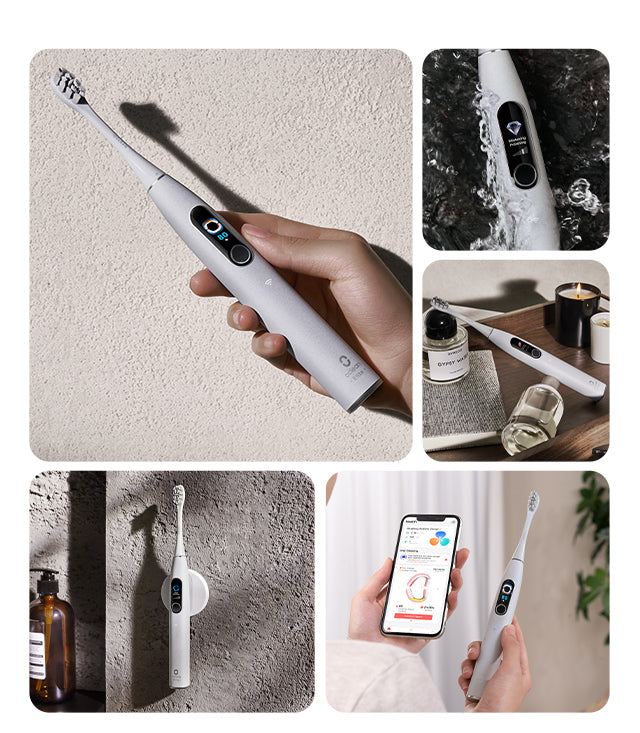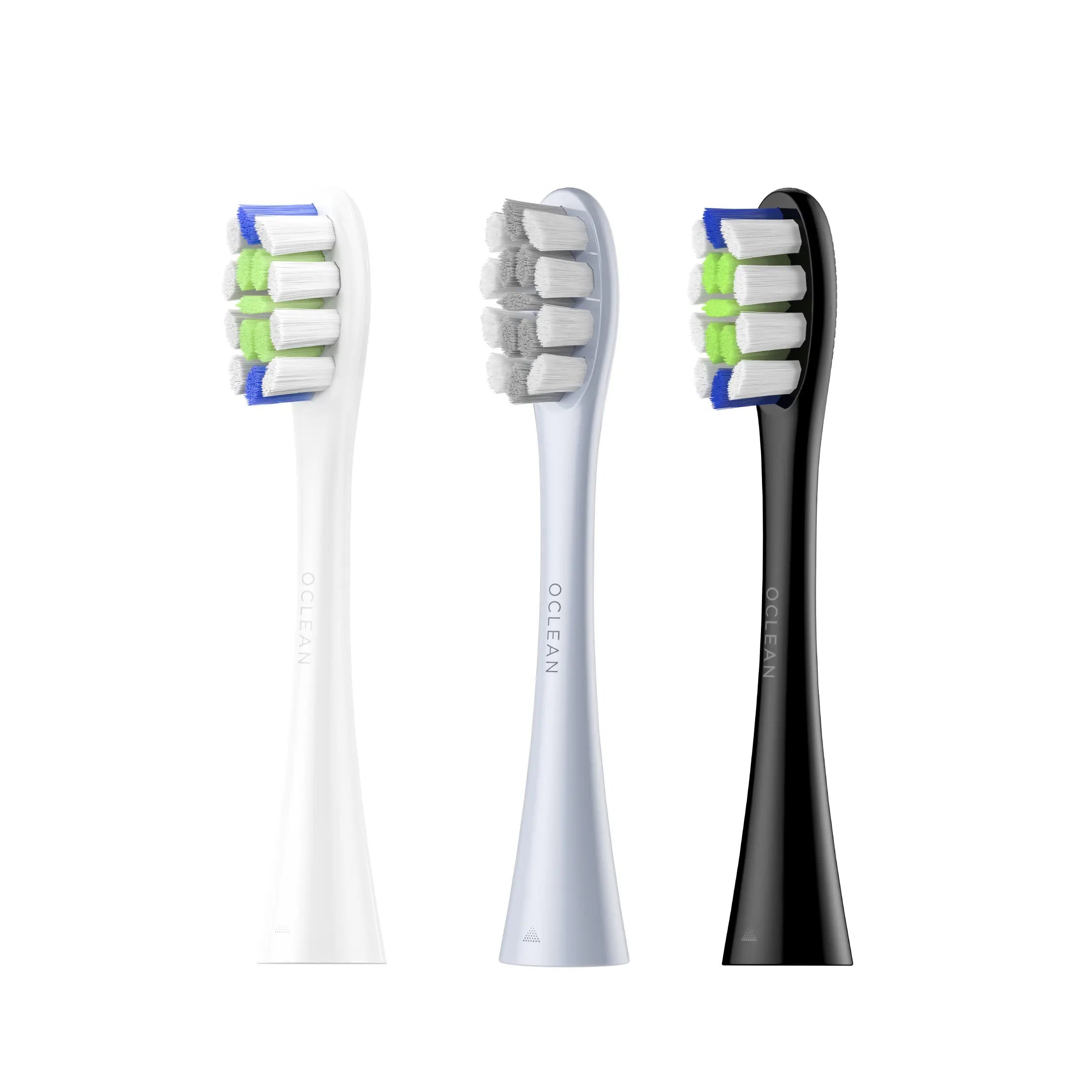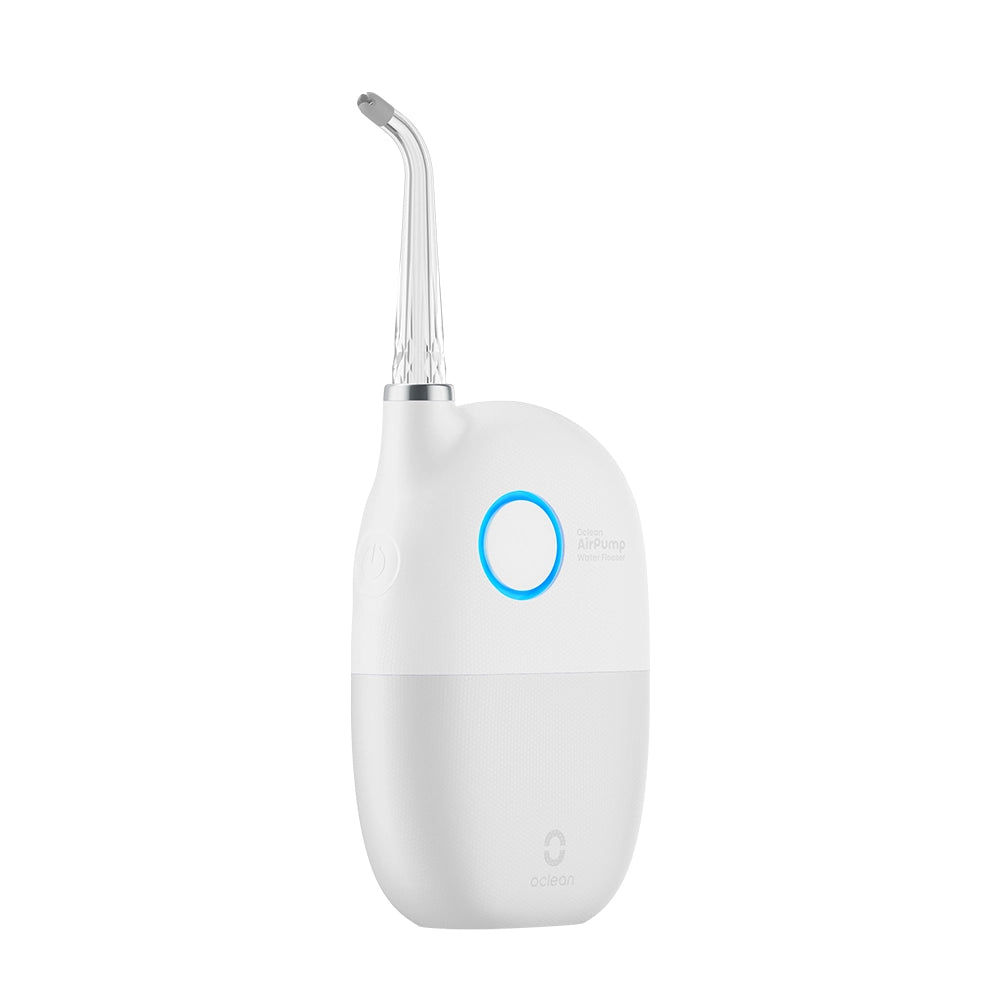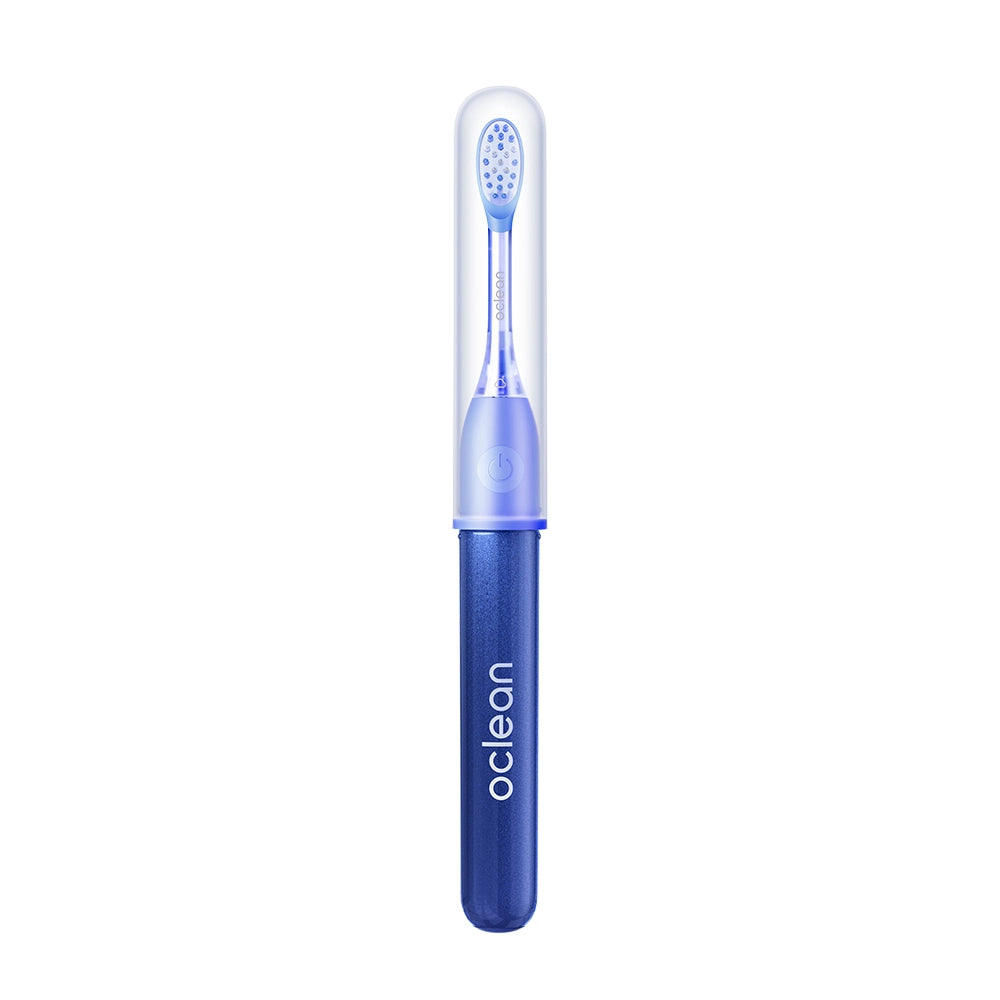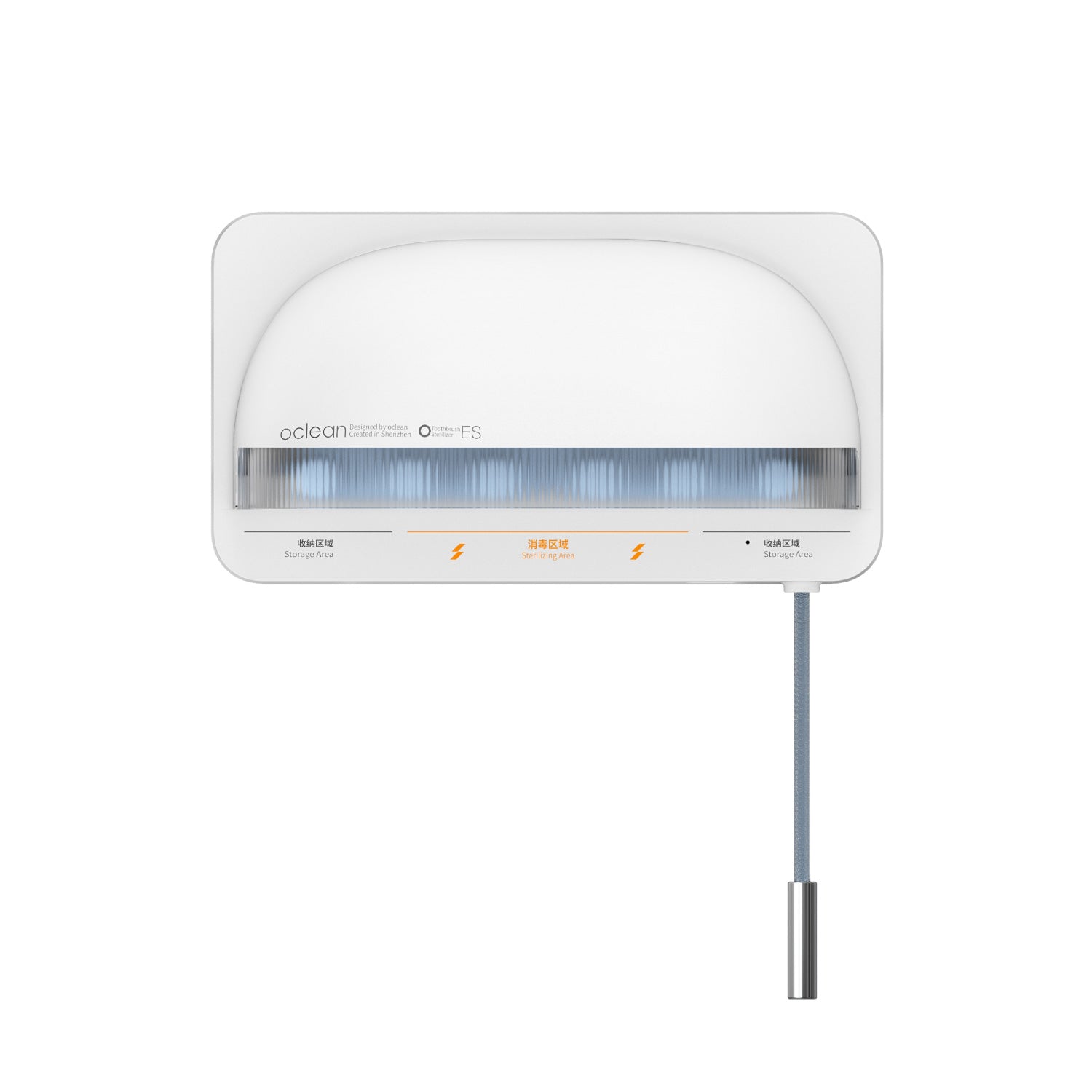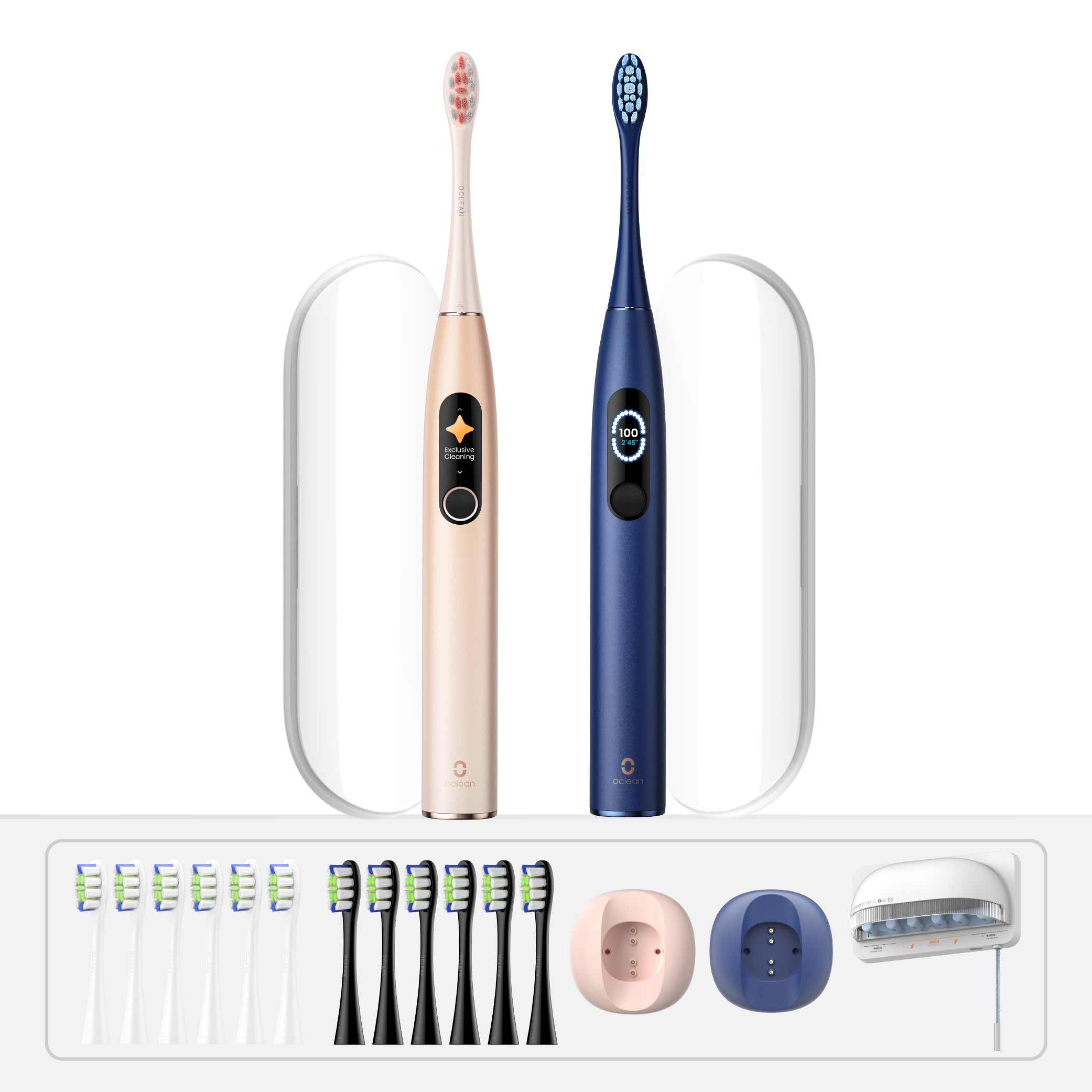Electric toothbrushes come in two options: rechargeable electric toothbrushes and battery-powered toothbrushes. People often talk about the choice between sonic and oscillating brushes. However, this choice matters just as much — it influences the cost of ownership, performance, environmental impact, and convenience.
But when browsing their local shelves, most people aren’t really sure which one to pick. Which is cheaper long-term? Which one offers stronger cleaning power? And which is a little gentler on the environment.
That’s what we’re answering below. Brands like Oclean are driving rechargeable adoption in Europe with affordable, feature-rich modes. However, battery-powered toothbrushes remain the preferred option for frequent travellers and kids.
What Do We Mean by Rechargeable vs Battery?
Rechargeable electric toothbrushes use built-in lithium-ion batteries that recharge via a dock or increasingly via USB-C. They often come with advanced features like multiple brushing modes, pressure sensors, and smart timers.
Battery-powered toothbrushes, by contrast, run on replaceable AA or AAA cells. They’re lighter, simpler, and usually stripped back to a basic on/off function.
Oclean exemplifies the modern rechargeable category, offering slim handles, USB-C charging, and long battery life that rivals or surpasses traditional options.
Total Cost of Ownership (TCO) Over 3 Years
The biggest deciding factor for most people is cost.
Often, people look at the initial price tag. But that’s only a fraction of the cost — the Total Cost of Ownership (TCO) is determined by adding up the cost of running the toothbrush for its lifespan.
Let’s go through these factors:
· Upfront Cost. Battery-powered toothbrushes are almost always cheaper (€10–€20 / £10-£20). Rechargeables have a higher cost but more features (€40–€250+ / £40-£250+).
· Ongoing Costs. The costs of recharging a toothbrush are generally negligible. Battery models will require around 4-8 cells per year (depending on usage). That adds up to around £2-8/year or €2.4-€9.6/year. Then, there are brush heads: around £12-28/year or €16–€32/year.
· Expected Lifespan. Rechargeable brushes generally last 3-5 years (some even longer, depending on upkeep and usage). Battery brushes are simpler, but due to their cheaper construction, they require replacement within 1-2 years.
Over a three-year period, a typical battery-powered brush might cost £50–£90 (€60–€100) once you include the handle, replacement heads, and disposable cells — plus the likelihood of buying a new handle if the first fails.
A rechargeable model, even with its higher starting price, usually comes in at around £80–£130 (€90–€150) over the same timeframe.
That means the gap isn’t huge, and because rechargeables often last longer and deliver steadier performance, they tend to offer better value for money in the long run.
Performance & Oral Health Outcomes
This isn’t even a competition.
Rechargeable electric toothbrushes are far superior to battery-powered brushes.

Why? Well, batteries aren’t strong enough to power a sonic electric toothbrush. Take Oclean’s X Ultra 20, for example. It comes the brand-new Maglev 4.0 motor, which achieves speeds of up to 84,000 movements per minute. At these speeds, it drives the toothpaste mixture between the teeth, offering an unrivalled level of cleaning.
And that’s without considering additional features: AI voice guidance, personalised brushing reports, zone tracking, pressure sensors, and in-built timers. You find all these features across the Oclean range.
By contrast, battery models just offer oscillating movement — and this weakens as the cells drain. Rechargeables continue to offer incredible power day after day.
Environmental Impact
This is slightly more balanced.
Choosing a sustainable toothbrush will usually mean going rechargeable. Battery-powered brushes — while they don’t have Li-ion cells to dispose of — are both more disposable and result in more waste. Batteries themselves are hard to process and recycle.
Oclean prioritises minimal packaging (that’s mostly recyclable). The energy-efficient Li-ion cells also last much longer, and the toothbrush is made from low-impact plastics. Together, this makes the toothbrush about as sustainable as possible without sacrificing oral hygiene.
Convenience: Travel, Charging, and Everyday Use
More balanced between the two options.
Battery-powered toothbrushes don’t require a charger, and cells are available everywhere. So, there’s no worrying about having the right adapter.
Rechargeable electric toothbrushes are heavier and often require a charger. However, newer models have come with a longer battery life. The Oclean Air 2T, for instance, offers the same high-level cleaning but weighs less than 95g and has up to 30 days of battery life. It’ll even quick charge within 2.5 hours and comes with a handy travel case.

The Oclean Flow does even better. While it doesn’t have as many features, it’ll stay charged for up to 180 days — perfect for all but the longest of trips.
Lifespan & Reliability
Rechargeables win this category.
While the motor inside a battery-powered toothbrush might last longer, cheaper plastics and designs mean these brushes break within 1-2 years. Rechargeable electric toothbrushes, in contrast, last for at least 2-3 years — in the EU, they come with a 2-year guaranteed warranty.
Oclean goes a step further, offering a 3-year warranty on all electric toothbrushes. That means even if it breaks, you’re still covered.
Who Prefers Which?
Across Europe, rechargeable electric toothbrushes dominate, especially among adults aged 25–55 in urban areas. These users value long-term savings, performance, and sustainability.
Brands like Oclean, Oral-B, and Philips lead the mid-to-premium market, with strong uptake in countries such as Germany, France, and the Netherlands, where oral health and eco-conscious habits are well established.
Battery-powered brushes, on the other hand, still hold appeal in specific use cases. They’re often preferred by:
· Frequent travellers or backpackers, who value simplicity and don’t want to pack chargers
· Families buying for young children, where lighter handles and lower prices reduce the risk of damage or waste
· Budget-conscious buyers in southern or eastern European countries, where electric brush penetration is still growing and price remains a key factor (e.g., parts of Italy, Poland, and Portugal)
The gap is narrowing as affordable brands like Oclean reshape expectations with USB-C charging, long battery life, and lower head costs. These features attract younger, value-conscious Europeans who once favoured battery models.
Rechargeables now dominate, while battery brushes serve niche roles — often as a starter option before users upgrade.
The Verdict
Overall, the verdict is clear: rechargeable electric toothbrushes are the winner.
They’re more sustainable, affordable, convenient, and offer better oral health outcomes. The only category where they slip behind is the total cost of ownership. But the gap between the two is small, and at the cheaper end of rechargeables is non-existent.
If you value your oral health, rechargeable electric toothbrushes are the obvious choice. And if you want the best of the best, Oclean is the industry leader. Every toothbrush is packed with most features for the price point. From the Ultra X 20 to the Flow, there’s something for everyone.
Browse Oclean’s rechargeable electric toothbrush range to find the brush that’s right for you.
Cuprins
